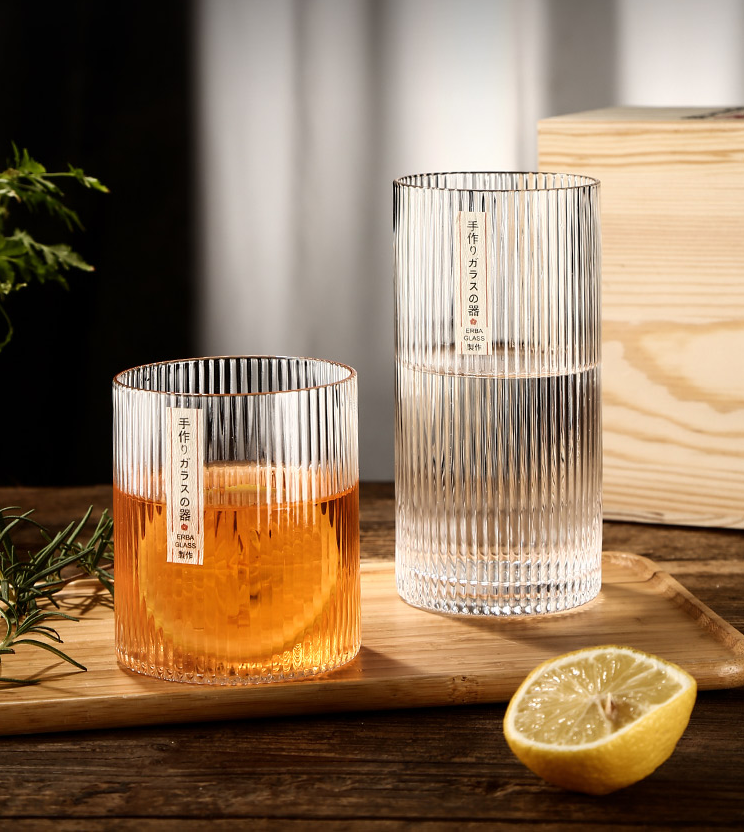
Nothing tastes worse than a good cup of tea served in a dirty or rusty teapot. Cleaning your Glass tea set properly is just as vital as having good tea when it comes to producing a beautiful cup. Learn how to properly care for your tea equipment and what not to do with your teapots.
Cleaning ideas for Tea Utensils in general
Always use clean utensils if you really want to enjoy your cup of tea. Smaller teaware, such as strainers, brewing baskets, or infusers, and larger teaware, such as teapots, mugs and glasses, and kettles, are examples of utensils.
Some may be easier to clean than others. Cleaning them properly can not only improve the flavor of your tea, but it will also help you save money by extending their lifespan.
Clean your utensils after each usage.
After each usage, teapots, infusers, and strainers should all be cleaned quickly. Never keep the same leaves in your teapot for more than a few hours, even if you're using them twice or more. Keeping tea leaves in the teapot will result in a brown coating that is difficult to remove. Before storing them, make sure they're completely dry.
Cleaning is easier with non-porous materials.
Non-porous ceramic or glass, rather than porous ceramics, maybe a better choice if you're concerned about your teaware's cleanliness. Glass, for example, can be washed in the dishwasher. Some teapot spouts are quite impossible to clean unless you use a dishwasher, which makes cleaning easier. Some teapots, such as Japanese kyusu and Chinese Yixing zisha, should never be washed in the dishwasher or with detergents. Keeping them perfectly clean will take more effort.
Select the most appropriate teapot for your needs.
Cleaning teapots with built-in metal strainers can be tricky. Teapots with removable stainless steel, ceramic, or glass teapots are easier to handle if you're new to tea.
Clean the tea leaves with hot water after removing them.
Always remove tea leaves from your teapots and wash them with boiling water once you've finished brewing. Stainless steel, glass, and nonporous ceramics are the only surfaces that should be cleaned with detergent.
Have a different teapot for each variety of tea.
No matter how well you clean a teapot made of porous material, it will build a thin film over time. Use one teapot for lighter teas and another for heavier brews. Earl Grey black tea, for example, should not be brewed in the same teapot as Silver Needle or Dragon Well tea.
Use a toothpick, toothbrush, or cotton buds to clean the area.
If your teapot, such as sesame Kyushu, has a built-in metal mesh strainer, you can remove small fragments of trapped tea leaves using a toothpick. Alternatively, a clean wet toothbrush can be used. Cotton buds can be used to clean spouts. It's also crucial to clean the spout.
Make use of a fresh sponge.
Clean any build-up inside your unglazed teapot with a sponge or a moist cloth. Always use a new mild sponge or keep a separate sponge just for your teaware.
Allow it to dry
After washing your teapot or tea set, dry it with a soft cloth. Do not cover a wet teapot with a lid, and make sure it is thoroughly dry before storing it.
What is the best way to clean your tea kettle?
A clean kettle is just as necessary as a clean teapot. Mineral deposits will appear in your kettle over time. Minerals in hard water cause deposits, and they will build up faster in tap water. There will be less residue if you use spring water.
Even if you use spring water, you should clean your electric kettle at least once a month. Kettles, like teapots, should not be cleaned with detergent. Although there are a variety of kettle cleaning products on the market, the majority of them use materials that you may already have on hand. Never use solutions designed for cleaning bathrooms, sinks, or tiles to remove limescale. The following are the finest natural and safe techniques to clean a kettle:
1. The acidity of citric acid
Cleaning your kettle with citric acid is the easiest, cheapest, and most effective method. Simply put, half-fill your kettle with water and come to a boil. Open the lid and stir in 1 tsp. citric acid. Allow for 10 to 20 minutes of resting time after covering the lid. Then, bring the water back to a boil and cook for another 10 minutes. Drain the water and clean it with fresh water.
2. Juice of lemon
Instead of citric acid, you can clean your kettle using lemon juice and water. Slice the lemon and place it in the kettle with the water and lemon slices. Bring to a boil. Allow 30 minutes for the mixture to rest.
3. vinegar (white)Another product that can be used to clean your kettle is white vinegar. It will, however, leave a stronger aroma than lemon. Simply fill your kettle with equal parts white vinegar and water and bring it to a boil. Sit it for some hours. Pour away the water and thoroughly wash with clean water until the aroma is gone.
4. Soda Bicarbonate
Bicarbonate of soda, often known as baking soda, can be used to clean a kettle as well as make a pink tea. Add 1-2 tablespoons of bicarbonate of soda to a half-filled kettle. Bring to a boil, then set aside to cool for 30 minutes. Drain the water and wash the dishes.


